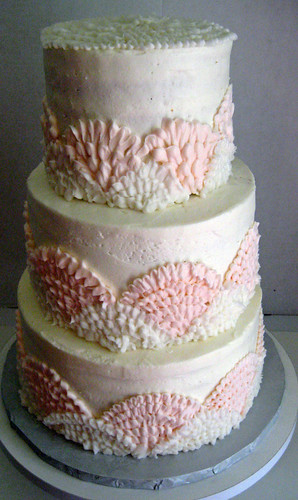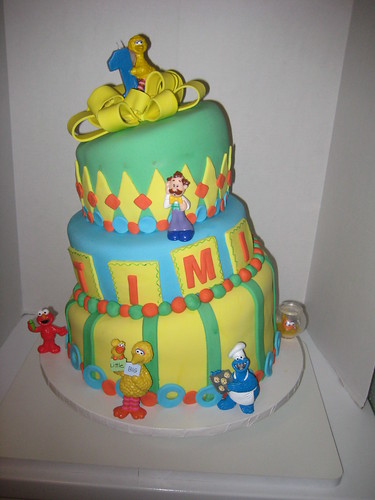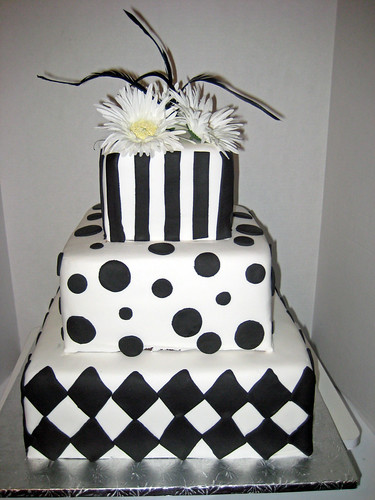It has come to my attention from my dear friend Master Pastry Chef Huebner that the icing popular chefs here in the Middle TN are using are playing a dangerous game with your health. The popular swiss meringue buttercream is possibly dangerous: If your baker claims to use this buttercream no matter how yummy it is it is like playing russian roulette with your health, unless the cake is chilled when it arrives at your wedding event, and with fondant icing chilling causes condensation beads to form which can leave pits in the fondant can interfere with your overall look of your cake or it can break down the fondant and the design on your cake can bleed.
Taken from Pastry 911QUESTION: I've been told that Italian and Swiss Meringue Buttercream can be left out from 6 hours, all the way to 2 weeks. Does anyone know for certain the answer?
ANSWER: To refrigerate or not: There are many conflicting answers as to whether you need to refrigerate this frosting or not. Normally, meringue frostings made with EGG WHITES (no egg yolks or whole eggs) do not need refrigeration, but with the
salmonella concerns of today, I recommend keeping it refrigerated. (Food Safety). Professionals are cautious because of the concerns about egg safety and that is playing into the answers you get. See Pantry: Eggs.
Italian Meringue Buttercream (IMBC) This is more popular than Swiss Meringue Buttercream. After the meringue is whipped to stiff peaks, and in the case of the Italian Meringue, cooled to room temperature. is made with softball (240 degree F) sugar syrup poured into whipping egg whites. Once whipped, add softened butter to the bowl, little at a time and whip until a fluffy consistency is reached. You can make the icing in advance; keep it in an airtight container in the refrigerator for a week. Italian Meringue Buttercream can be frozen for up to 3 months (some baker's have reported that it has kept longer). NOTE: In the book, ON FOOD AND COOKING, by Harold McGee, he says that
"Because much of the syrup's heat is lost to the bowl...the foam mass normally gets no hotter than 130 or 135 degrees F, which is insufficient to kill salmonella", page 108.
If your baker is using this buttercream make sure they have proper training on food safety and are holding this buttercream at proper temperatures. With wedding cakes set up sometimes as much as 4 hours before your event it would be very warm by serving time.
Symptoms of Salmonella InfectionAn infectious dose of Salmonella is small, probably from 15 to 20 cells. Typically, non-typhoidal Salmonella produces a self-limiting febrile gastrointestinal illness that is indistinguishable from that caused by other bacterial enteric pathogens. Dehydration is the principal clinical concern. The incubation period – the time between ingestion of Salmonella bacteria and the onset of illness – varies from six to 72 hours (Mayo Clinic, 2007, April 12; MMWR Recomm Rep, 2001).
Salmonella can cause three different kinds of illness: gastroenteritis, typhoid fever, and bacteremia.
Symptoms of Salmonella gastroenteritis include diarrhea, abdominal cramps, fever, nausea, and/or vomiting. In mild cases diarrhea may be non-bloody, occur several times per day, and not be very voluminous; in severe cases it may be frequent, bloody and/or mucoid, and of high volume.
Fever generally occurs in the 100°F to 102°F (38°C to 39°C) range. Vomiting is less common than diarrhea. Headaches, myalgias (muscle pain), and arthralgias (joint pain) are often reported as well. Whereas the diarrhea typically lasts 24 to 72 hours, patients often report fatigue and other nonspecific symptoms lasting 7 days or longer.
Complications of Salmonella Infection
Typhoid fever, also known as enteric fever, is caused by Salmonella serotype typhi. The onset of symptoms usually occurs between 5 and 21 days after ingestion of Salmonela typhi bacteria. Symptoms may include constipation, cough, sore throat, headache, and a rash on the infected individual’s chest, as well as the slowing of the heartbeat and enlargement of the liver and spleen (Mayo Clinic, 2007, April 12).
Bacteremia is characterized by infection of tissues surrounding the brain and spinal cord (meningitis) and infection within the bloodstream (sepsis). This condition occurs when Salmonella enter and circulate within an infected individual’s bloodstream, and is accompanied by few symptoms (Mayo Clinic, 2007, April 12).
Reiter’s syndrome, which includes and is sometimes referred to as “reactive arthritis” is an uncommon, but debilitating, result of a Salmonella infection. Reiter’s syndrome is a disorder that causes at least two of three seemingly unrelated symptoms: reactive arthritis, eye irritation, and urinary tract infection (Hill Gaston & Lillicrap, 2003). The reactive arthritis associated with Reiter’s develops when a person eats food that has been tainted with bacteria. Reactive arthritis is characterized by the inflammation of one or more joints following an infection localized in another portion of the body, commonly the gastrointestinal tract. The symptoms of Reiter’s Syndrome usually occur between one and three weeks after the infection.
The three most common symptoms of Reiter’s syndrome are arthritis, eye irritation, and urinary tract symptoms. The arthritis associated with Reiter’s syndrome typically affects the knees, ankles, and feet, causing pain and swelling. Wrists, fingers and other joints can be affected, though with less frequency. Patients with Reiter’s syndrome commonly develop inflammation where the tendon attaches to the bone, a condition called enthesopathy. Some patients with Reiter’s syndrome also develop heel spurs, bony growths in the heel that cause chronic or long-lasting foot pain. Arthritis from Reiter’s syndrome can also affect the joints of the back and cause spondylitis, inflammation of the vertebrae in the spinal column. The duration of reactive arthritis symptoms can vary greatly. Most of the literature suggests that the majority of patients recover within a year. The condition, can, however, be permanent. One study found nearly 50 percent of patients with post dysenteric reactive arthritis continued to have symptoms roughly one year after onset (Inman, et al., 1998).
The involvement of the eye in Reiter’s syndrome is most commonly manifested as conjunctivitis, inflammation of the mucous membrane that covers the eyeball, or uveitis, an inflammation of the inner eye. Conjunctivitis and uveitis can cause redness of the eyes, eye pain and irritation, and blurred vision.
The third site for Reiter’s syndrome symptoms is the urogenital tract. This includes the prostate, urethra, and penis in men and the fallopian tubes, uterus, and vagina in women. Men may notice an increased need to urinate, a burning sensation when urinating, and a discharge from the penis. Some men also develop prostatitis. Symptoms of prostatitis include fever, chills, increased need to urinate, and a burning sensation when urinating.














